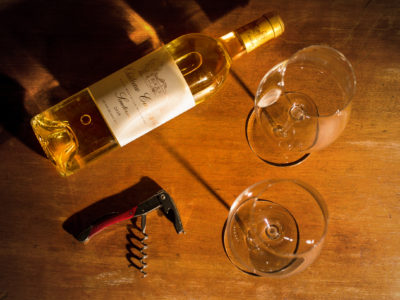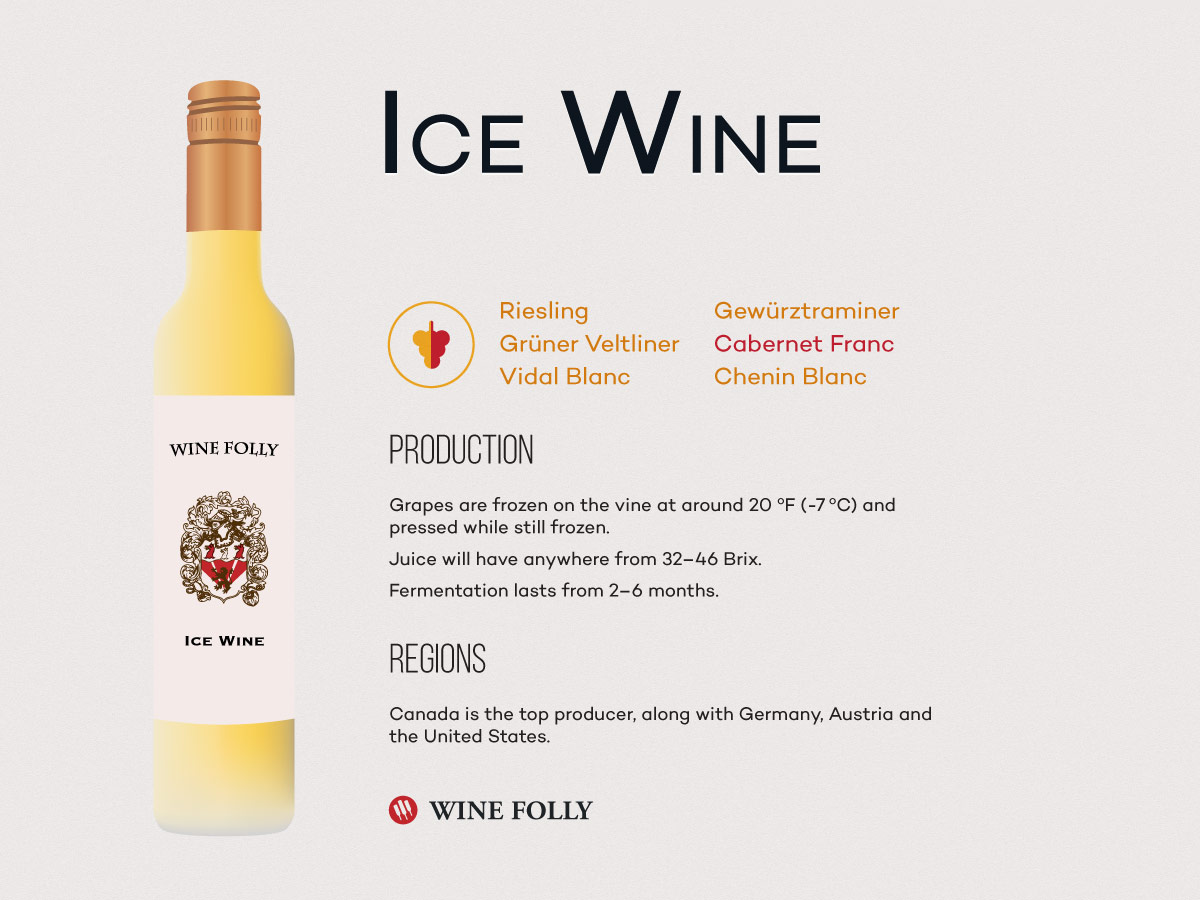Welcome to the wonderful world of ice wine, one of the sweetest mistakes nature ever made.
It’s hard to know how anyone would ever purposefully make this wine. True ice wine is one of the hardest, most misery-stricken wines to produce. Just imagine yourself outside in sub-zero temperatures, in the dark, on a slippery hill, in the middle of a frozen winter, trying to harvest grapes.
This is ice wine.
Ice Wine, You’re So Fine
It’s one of those wines some of us pretend to hate. After all, it has almost double the sweetness of Coca-Cola. Still, it’s hard to despise the wonderful gift that grapes and a cold climate creates.
A Lil’ History
It’s been supposed that in Franken, Germany, during a particularly cold winter in 1794, winemakers were forced to create a product from the grapes available for harvest. The resulting wines from that vintage had an amazingly high sugar content, along with great flavor. Thus, the technique became popularized in Germany. By the mid-1800s, the Rheingau region was making what the Germans called eiswein.
Making Ice Wine
The secret to ice wine is processing frozen grapes at around 20 ºF (-7º C). Frozen grapes are picked frozen on the vine and come into the winery.
Imagine thousands of hard, icy marbles dropping into grape crusher and grape press. Ouch! Many heritage presses break under the pressure of squeezing frozen grapes!
At any rate, only about 10–20% of the liquid in these frozen grapes is used for ice wine. The juice is so sweet (anywhere from ~32–46 Brix), that it can take anywhere from 3–6 months to make ice wine. (This is a long, slow, finicky fermentation!)
When it’s all done, wines have around 10% ABV and a range of sweetness from around 160–220 g/L of residual sugar. 220 g/L is two times the sweetness of a Coke!

Cool climate wine varieties used to make ice wine include Cabernet Franc, Gewürztraminer, Riesling, Grüner Veltliner, and Vidal Blanc (a French Hybrid variety).
Grapes Used To Produce Ice Wine
The grapes that grow well in cold climates make the best ice wines and these include: Cabernet Franc, Merlot, Gewürztraminer, Riesling, Grüner Veltliner, Chenin Blanc, and Vidal Blanc. Cabernet Franc stuns with its brilliant orange-ruby hue, but it’s hard to find outside of Ontario, Canada.

Grapes must be picked frozen from the vine to be called a true ice wine. Vineyards in Michigan by Andrew McFarlane
True Ice Wine
True ice wine requires a cold climate where grapes are harvested frozen on the vine. Fortunately, in Canada, Germany, Austria, and the US, dessert wines are not allowed to be labeled as ice wine if grapes are commercially frozen. You will see these products usually labeled as “iced wine” or simply “dessert wine.” So, if you’re looking for true ice wine, be a wary shopper and read the labels or look up the production information.
Pairing Food With Ice Wine
As ice wine is a dessert wine with explosive fruit flavors and on the high-sweetness end of the spectrum, you’ll want to pair it with somewhat subtle desserts containing enough fat to balance the taste profile. If you prefer more savory, late night snacks, a great pairing option with ice wine would be softer cheeses.
A few desserts that pair well with ice wine: cheesecake, vanilla pound cake, ice cream, coconut ice cream, fresh fruit panna cotta, and white chocolate mousse.
Expect To Spend Over $30
Ice wines are expensive to make. Ice wine requires 4–5 times as many grapes. Plus, they’re all hand-picked. Still, the market for these wines is small, it’s possible to find great deals around the $30 mark (for 375 ml bottle).
Unfortunately, many great Canadian ice wines are over $50 for a 375 ml bottle. If you see ice wines for cheaper, they’re probably made with commercially frozen grapes (“iced wine” or “Riesling Ice”), or adulterated in some way.
Aging Ice Wine
Most people believe ice wines can age only about 10 years, but certain varieties (Riesling and Grüner Veltliner) age longer.
Still, if you love the tingle of acidity in an ice wine, don’t plan on aging it too long. That sparkle diminishes over time to reveal a syrupy, rich, deep bronze-colored wine. Expect flavors of molasses, maple, and hazelnut in an ice wine aged long term.

Up Next: Dessert Wines
Learn more about the major classifications of dessert wines and find new favorites.
